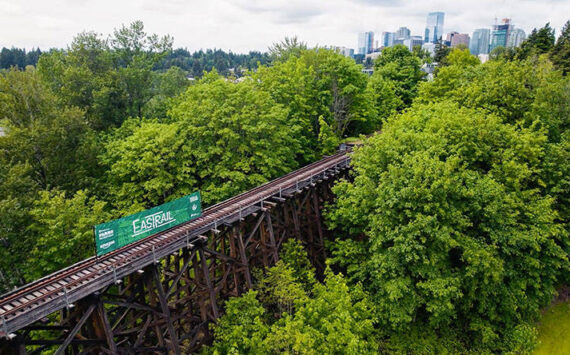Last week the legal maneuvering over the proper disposition of the ancient human remains known as “Kennewick man” escalated into open hostilities. Lawyers for the scientists who want to study the 9,000-year-old bones publicly stated that Seattle’s Burke Museum is no fit repository and more or less demanded that the remains instead be turned over to the Smithsonian Institution immediately.
There may be rational arguments for this. If so, they aren’t manifest in the rambling 20-page memorandum the eight prominent anthropologists and archeologists submitted on August 12 to the federal judge who’d ordered them and the US Army Corps of Engineers to resolve their nearly two-year-old dispute.
The grounds cited to support the contention that the Burke is unsuitable to house the remains turn out to be two e-mails a Burke employee sent in October 1996 to one of the plaintiffs, Dr. Richard Jantz of the University of Tennessee. Prior to filing suit in October 1996 to prevent the corps from “repatriating” the remains found the preceding August in Kennewick’s Columbia Park for reburial by resident Native American tribes, Jantz circularized a large number of scientists in the field to drum up support for retaining the bones for further study. According to the memorandum, “a copy of this was sent to a colleague at the Burke. The response, provided [along with the memorandum] in camera [not for public disclosure], was replete with insult, misinformation, and accusation.”
However upset Jantz claims to be by the e-mail response to his plea, he made no issue of it until it began to look this summer like the corps and its Native American allies might agree to a plan drawn up by National Park Service archeologist Frank McManamon to allow the remains to be studied scientifically at a suitable neutral site before repatriation and reburial (for details of McManamon’s plan, see “Gnawing on the Bones,” SW, 7/30).
On the face of it, the Burke looked like a good spot for the job. It’s close enough to the discovery site to allow Native American observers to attend the bones without undue hardship. As the state museum of anthropology and archeology, the Burke has the facilities and staff to provide support for the bipartisan team selected to perform the examination; and, perhaps most important, no one on the museum’s staff has been involved with the litigation, on one side or the other.
The Burke, however, is not where the plaintiffs want the bones to end up, so beginning in June their attorney, Alan Schneider of Portland, began badgering the corps’ attorneys with demands for lists of alternate repositories that might be more acceptable. When corps representatives responded that they saw no reason to pursue the question further, a reason was found—two reasons, in fact.
Not only did the 21-month-old e-mails to Dr. Jantz indicate that the Burke harbored someone who disagreed with the plaintiffs’ position, the very director of the institution, University of Washington anthropologist Karl Hutterer, had apparently proved himself insufficiently sympathetic to the cause of science, having told one of the plaintiffs back in June that (in the words of the memorandum) “he thought the whole affair could have been avoided if plaintiffs had fairly contacted the tribes at the beginning of the controversy.”
That may seem slender grounds for asserting the Burke is a pesthole of opposition to the plaintiffs’ position—the specter that visiting scientists might be denied access to “institution facilities” (including snack bars and restrooms) by a hostile staff is also invoked—and since the actual text of the offending e-mails hasn’t been disclosed (“to avoid embarrassing the author,” says the memo) it’s hard for outsiders to gauge just how serious the problem might be. And if the idea is to find an institution devoid of prejudice in the affair, the Smithsonian would hardly seem to be that place: The director of its anthropology department, Dr. Douglas Owsley, is one of the most active of the eight parties to the lawsuit.
The fact is, the Smithsonian has been determined to take charge of the remains pretty much since the day their ancient provenance was proven. A rumor’s been circulating for more than a year that the institution had already made a stealth play for their possession long ago, and last week the story was finally proven true.
When a corps lawyer chanced upon a newspaper report about the discovery of the bones on August 30, 1996 and called a Benton County official for more information, she was told the remains were already slated to be shipped to the Smithsonian, the freight to be paid by Owsley. Pointing out that the bones had been found on federal property and hence fell under federal law controlling their handling and examination, the attorney put a stop to that plan.
Having failed to gain possession (which is said to be nine-tenths of the law), the Smithsonian made a formal request to the corps that the bones be turned over to its custody. But by this time Owsley and his associates had already brought their lawsuit against the corps in Portland, so it was hard to argue that the institution was impartial in the matter.
Apparently, having been turned aside as a repository on the grounds that its science might be prejudiced, the Smithsonian and its allies have decided that the best policy is to attack the impartiality of their sister institution. If the kettle’s just as sooty as the pot, why not let the pot have its way—particularly a pot as big and impressive as “the nation’s attic”?








